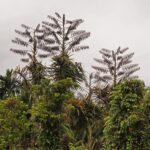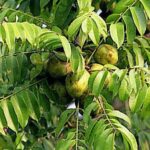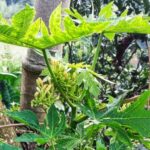Tsamma melons are the original progenitors of watermelons. Historical records indicate that these melons were already under cultivation in the Nile Valley as far back as 2000 BC. In contemporary times, Tsamma melons continue to be utilized for their oil in the cosmetic industry. For some people, they still serve as both sustenance and a source of hydration.
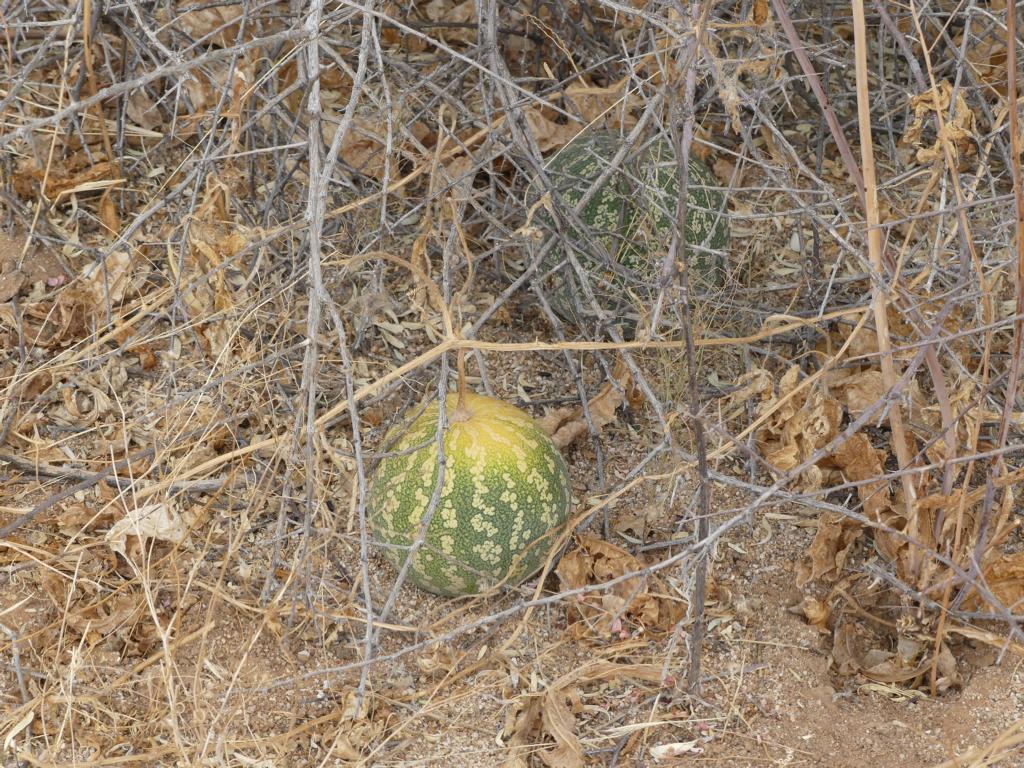
Species of wild melons in Namibia
In Namibia, the following species of Tsamma melons are found:
- Citrullus ecirrhosus
- Citrullus lanatus var. citroides
- Citrullus rehmii
According to Mrs. Mienkie Welman, a researcher at the National Herbarium in Pretoria, the perennial Citrullus ecirrhosus lacks tendrils and is confined to Namibia and the Richtersveld region of the Northern Cape. Citrullus lanatus var. citroides, commonly known as the ‘Tsamma melon,’ shares similarities with C. ecirrhosus but features tendrils on its stem. The nomenclature of these two species remains botanically uncertain, mainly due to their striking visual resemblance. The annual C. rehmii, on the other hand, is extremely rare and can only be found in the Namib desert, making it endemic to this region. Additional information can be found in this source on the South African National Biodiversity Institute website.
According to the provided source, mature fruits of the wild C. lanatus can remain whole and fleshy for more than a year after separating from the parent plant, and they can be stored underground for extended periods.
Taste of Tsamma melons
Regardless of their specific species or variety, Tsamma melons are best evaluated for potential consumption through taste testing. The cucumber family (Cucurbitaceae) comprises members such as cucumbers, pumpkins, zucchinis, squash, melons, and others. In their natural state, many of these plants contain significant amounts of the intensely bitter compound known as Cucurbitacin. This substance possesses toxic properties and also functions as an insecticide and fungicide. According to information provided in this source, the lethal dose for humans is estimated to be 300 mg of Cucurbitacin. It is important to note that the extreme bitterness of this compound makes it highly improbable for a human to consume such a substantial dose.
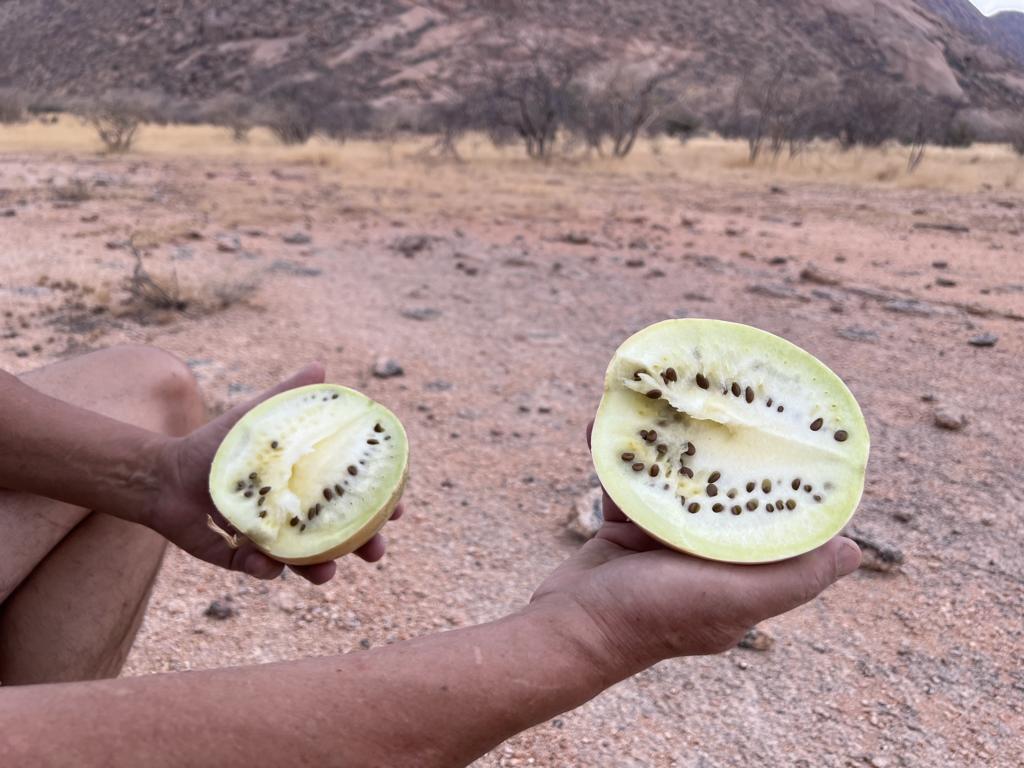
Even in minute concentrations, the bitter taste of cucurbitacin remains detectable (with a taste threshold of 10^-6 mol/L).
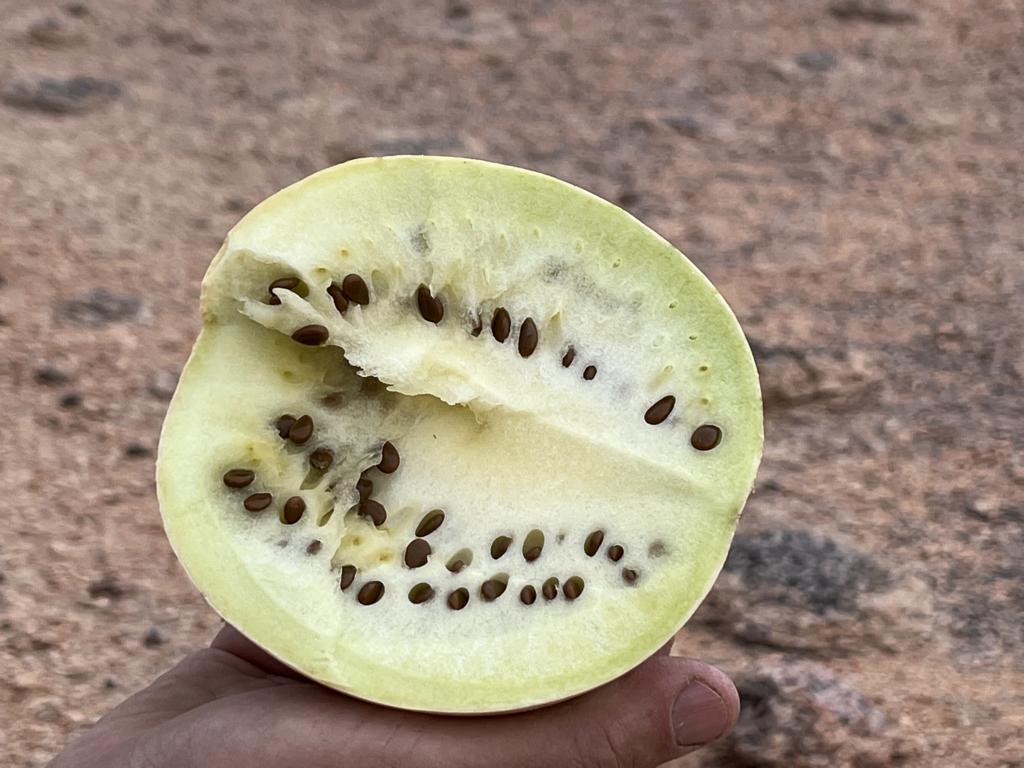
Upon testing the flesh of a recently opened Tsamma melon with the tip of the tongue, one might encounter either a bitter flavor or a relatively neutral taste akin to that of a cucumber. Should the taste lean towards bitterness, only the seeds are suitable for utilization. Conversely, if the flavor resembles the watery nature of cucumber, the seeds can be eaten, and the flesh and rind of the melon can also serve as a viable source of hydration.
Tsamma melon seeds
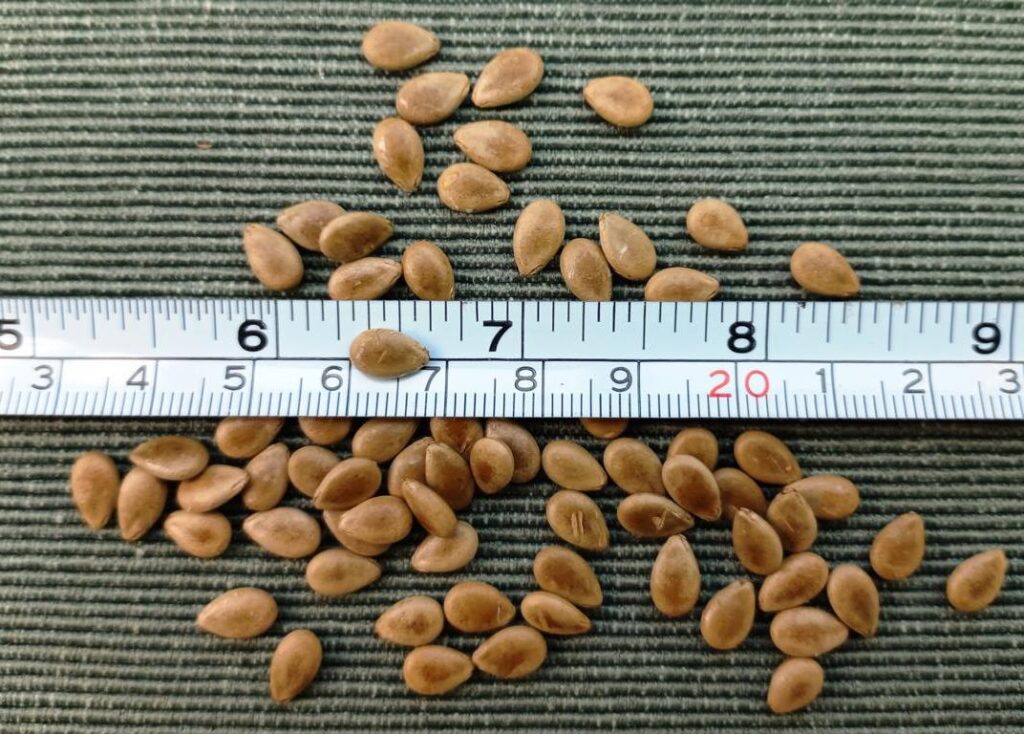
The seeds of all Tsamma melon varieties include significant quantities of essential nutrients, including vitamin C, minerals, fat, starch, and riboflavin. They possess a notable oil content akin to pumpkin seed oil, making them suitable for consumption. However, these seeds are relatively small, measuring around 8 mm / 0.31” long. One finds the nutritious, fatty, and flavorful kernel in their exceedingly rigid and brittle shells. These kernels comprise approximately 35% protein, 50% oil, and 5% dietary fiber. It should be noted that due to the thickness and robustness of the shell, extracting the kernel by cracking the seed open requires considerable effort.
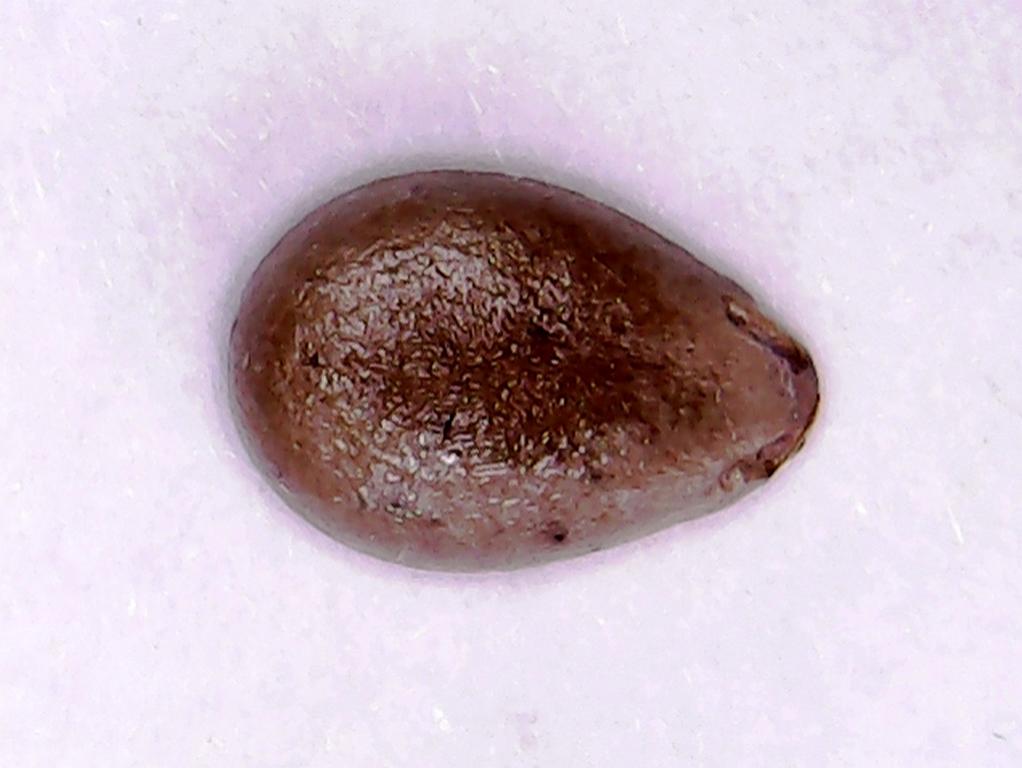
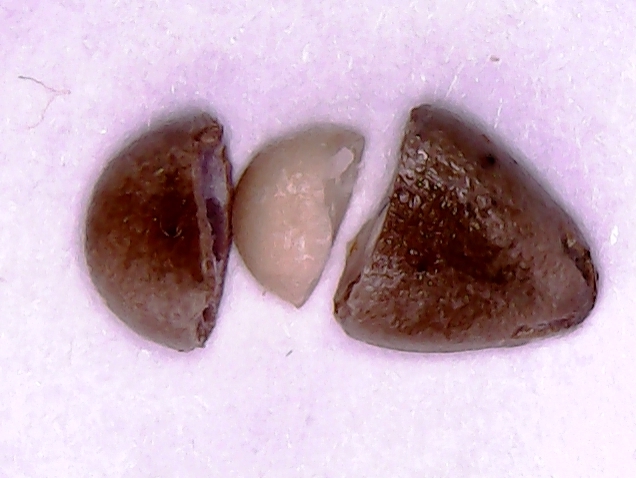
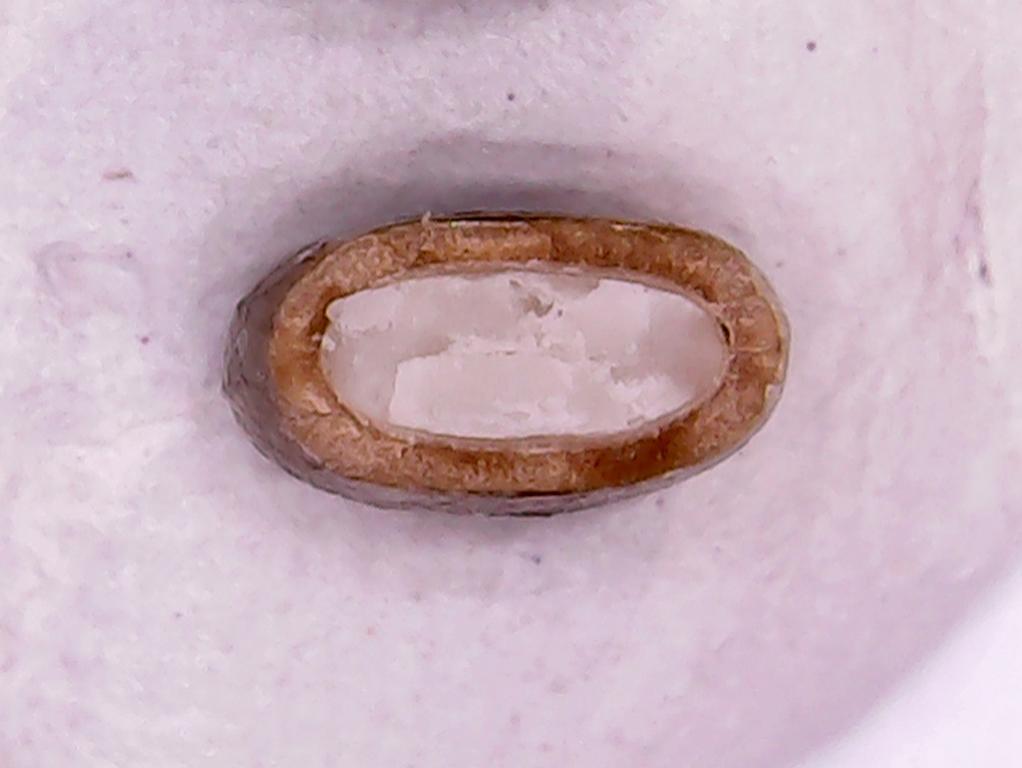
A more effective approach for extracting the energy-rich kernel contents is roasting and subsequently crushing them between two stones. Upon crushing the roasted seeds, an appealing nutty aroma is released—an olfactory sensation that the author regards as the most potent and delightful nutty fragrance he has ever encountered.
It should be noted that consuming brittle seed hulls and oily kernel fragments together is not recommended, as the abrasive texture can cause discomfort to the throat. Nevertheless, extracting the energy from this mixture is necessary.
Cold extraction of Tsamma melon seed oil
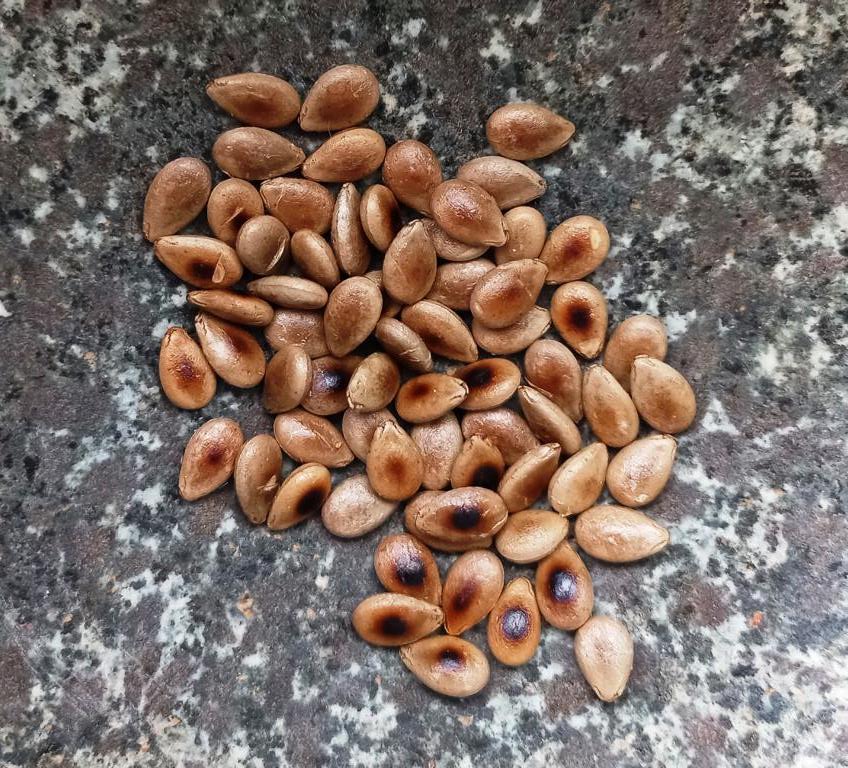
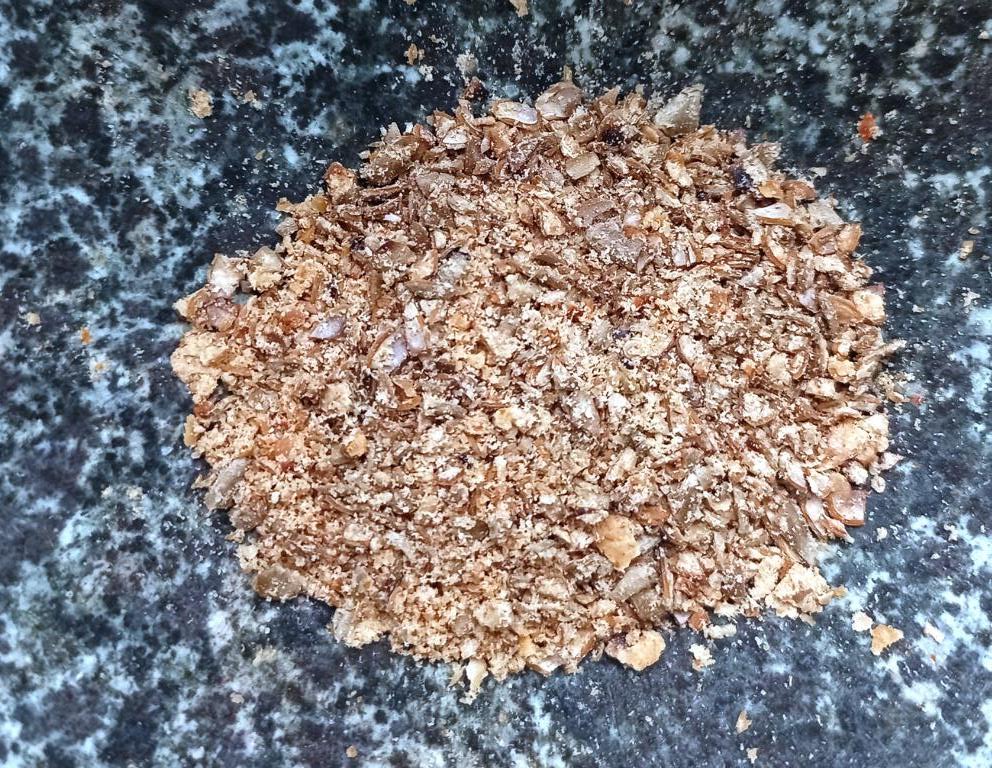
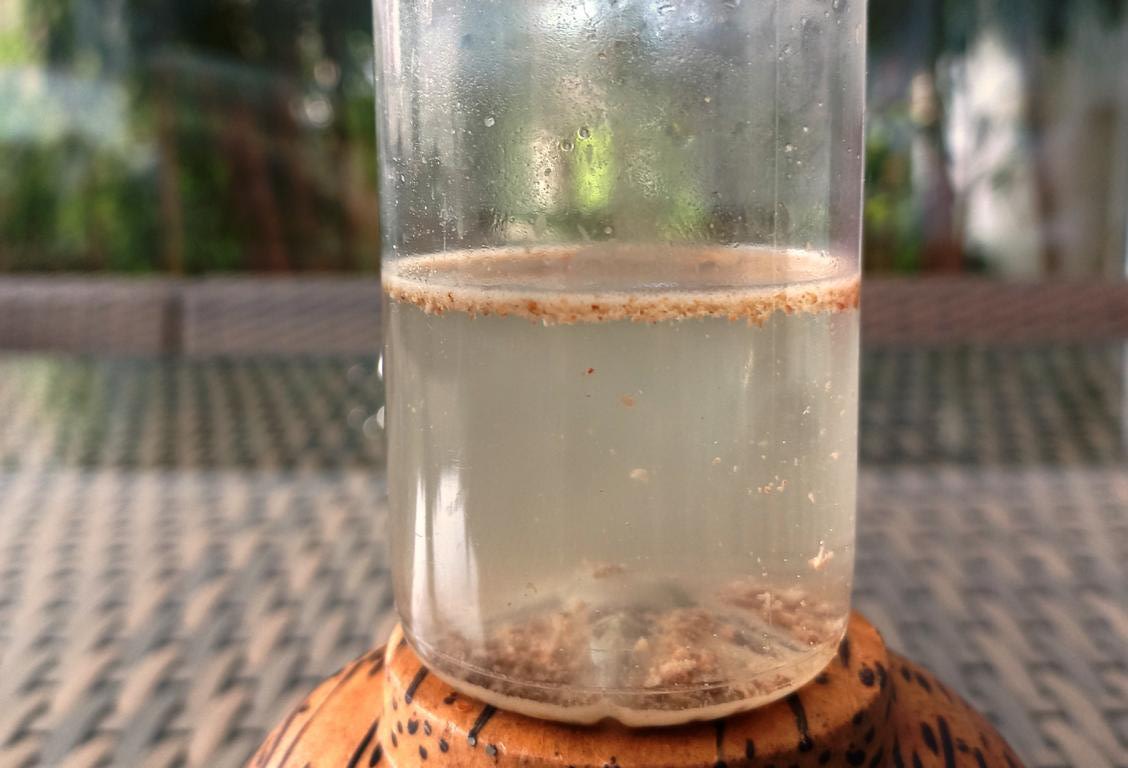
As an experiment, roasted and crushed seeds were introduced into cold water to observe the effects. A thin emulsion formed after vigorously shaking the mixture, with most of the crushed seeds descending to the bottom. Cold extraction is ineffective in yielding substantial energy from the crushed seeds.
Hot extraction of Tsamma melon seed oil
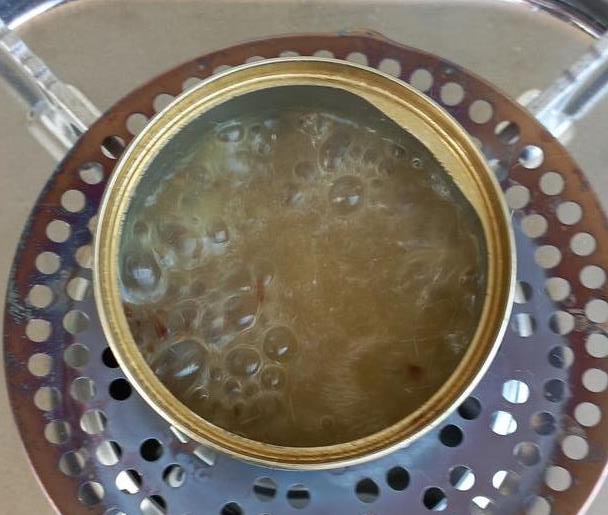
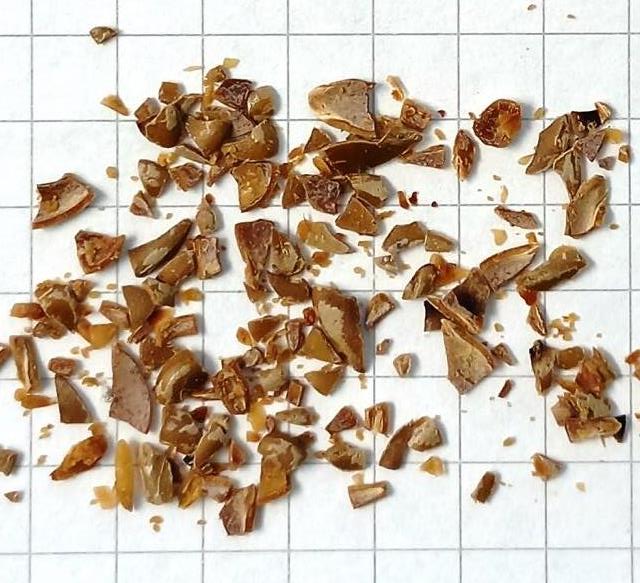
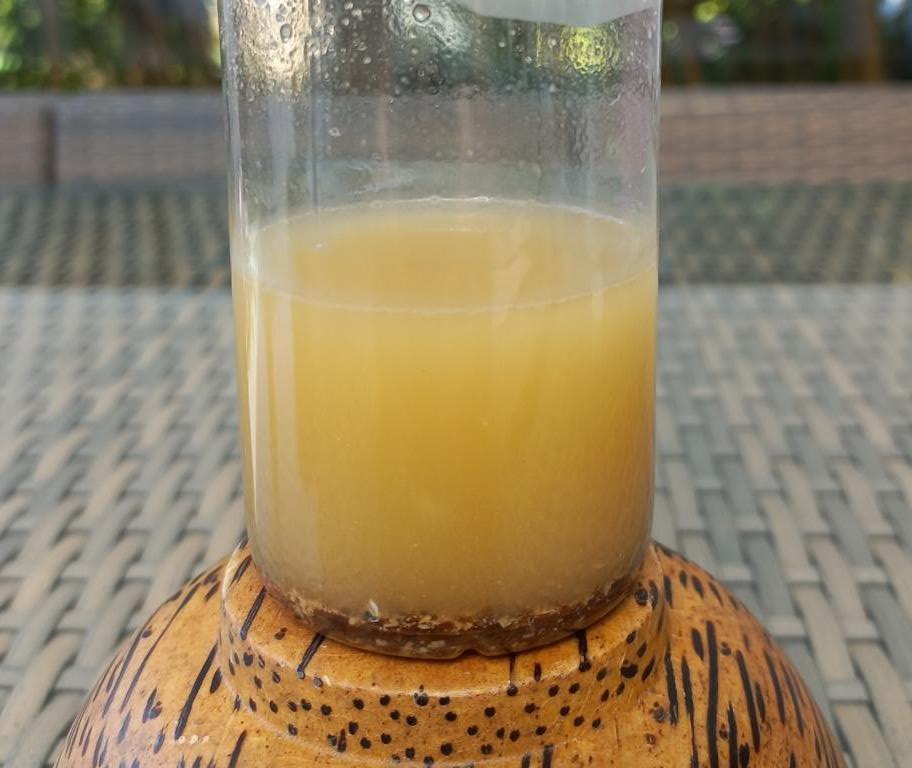
Literary references show that bushmen have been known to “…cook Tsamma melon seeds in soups…” However, cooking the seeds will not effectively extract energy. Crushing them prior to boiling proves to be highly effective, and roasting before crushing will improve their flavor.
Upon boiling a sample quantity, a substantial and flavorful emulsion formed, with the crushed shells, devoid of kernels, settled neatly at the bottom. This proved the bushmen’s way of extracting energy from Tsamma seeds. And after consuming this pleasantly nutty-flavored liquid, the boiled-out shells could be conveniently discarded.
Water from Tsamma melons
The pulp of Tsamma melons contains an impressive water content exceeding 90%, alongside Vitamin C, pectin, ascorbic acid, trace elements, and negligible caloric value. This liquid can be accessed by pounding the pulp, assuming it isn’t a bitter melon variety. A hole is typically made at one end of the melon to achieve this, and the central portion is consumed. Subsequently, a stick mashes the remaining pulp into a watery consistency.
Historically, it was reported that bushmen could only traverse the Kalahari Desert during mid-winter melon season. During their journeys, Tsamma melons served as their main water source. However, this reliance was only possible due to their in-depth knowledge and ability to discern usable melons based on their bitterness levels. This knowledge warrants further practical studies and a systematic description in the future.
Until a comprehensive understanding of this subject is established, caution should be exercised when considering Tsamma melons as a water source, particularly in the case of bitter varieties containing Cucurbitacin. An exception might be made in dire survival scenarios when no bitterness can be detected.
Tsamma melons for food
• Tsamma melon pulp, devoid of bitterness, boasts a substantial pectin content, making it suitable for cooking and utilization as jam or in similar applications.
• The young, green leaves and blossoms of the melon plant are edible and can be consumed as vegetables.
• The rind of non-bitter melons can be discarded, and the remaining flesh can be sun-dried. This dried flesh has a long shelf life and can be stored for extended periods of time, and it can be used in various stews and dishes.
• Roasting the fruit beneath a bed of hot coals in the sand can enhance the flavor of the flesh of non-bitter varieties.
Other uses of Tsamma melons
• In the past, Bedouins of the Sahara desert placed Tsamma melons directly into a fire and cooked them to a dry state. Subsequently, the dried melon was ground to produce a paste. This paste was then applied to a cloth and dried under the sun. The resulting rind served as a tinder, aiding in catching sparks for fire-making.
• When needed, hollowed-out Tsamma melons can function as cooking containers, provided there’s no direct contact between the food and the potentially bitter rind.
• Dried Tsamma melon shells are storage containers for berries, grubs, and such.
• The oil derived from raw or boiled Tsamma melon seeds was used for skin moisturization and protection against sunburn. Also, Bushmen chewed the seeds to create a cosmetic paste applied to the skin, imparting smoothness.
Another interesting fact
Brown hyenas play a pivotal role in the dispersal of Tsamma melon seeds. They consume the melons and subsequently distribute the seeds through their feces, which facilitates plant reproduction. The stomach acid of hyenas only partially breaks down the seed shells before they are expelled. Interestingly, the excrement acts as a protective shield for the seeds, preventing them from being consumed by rodents. This exemplifies a classic case of symbiotic relationships.
Lessons learned from Tsamma melons:
- Generally, when encountering a plant in a desert environment, the initial assumption should be that it is poisonous unless its safety for consumption is evident, such as in the case of dates and certain other recognizable species.
- If the melon is not bitter, it can be consumed. Conversely, if bitterness is detected, only the seeds should be used.
- These seeds can be crushed and boiled to extract their energy-rich contents.
- Numerous other applications have been mentioned in the article above.
- It is essential to verify the edibility of desert plants before consumption due to the potential presence of toxins.
- Conducting a bitterness test on all Tsamma melons is an imperative step.
.



